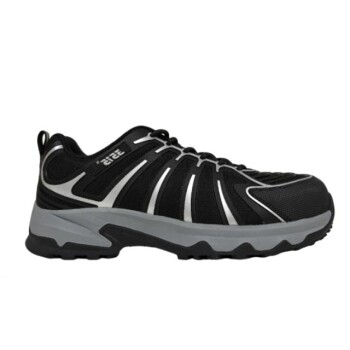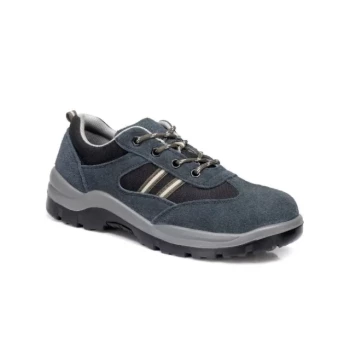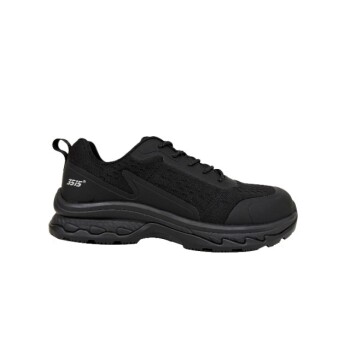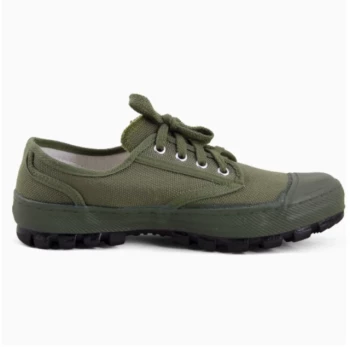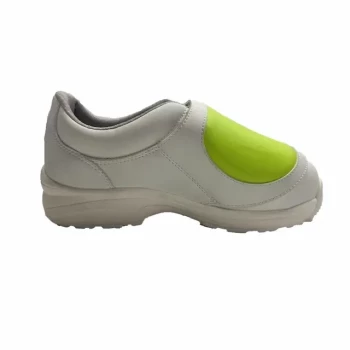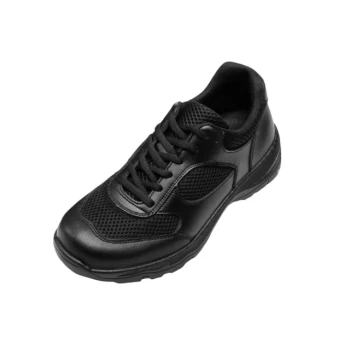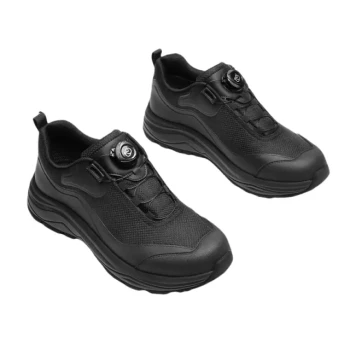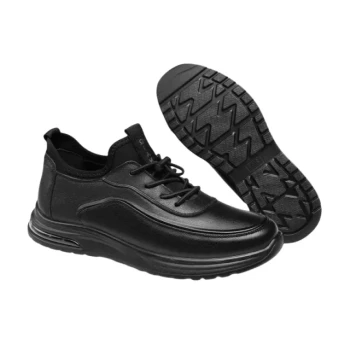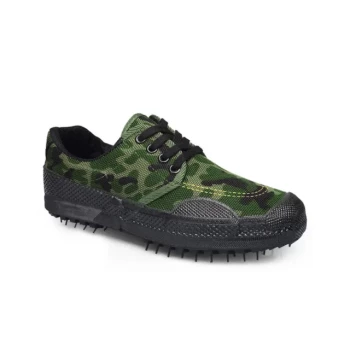Yes, you can wear safety shoes all day, and for many professions, it is a mandatory requirement. However, doing so without considering the shoe's construction can lead to significant discomfort and potential long-term issues. The key is understanding that modern safety footwear offers options designed specifically for extended wear.
The ability to comfortably wear safety shoes all day depends almost entirely on choosing the right type of shoe. Prioritizing lighter materials, like composite toes, and ensuring a proper fit is critical to balancing mandatory protection with personal well-being.
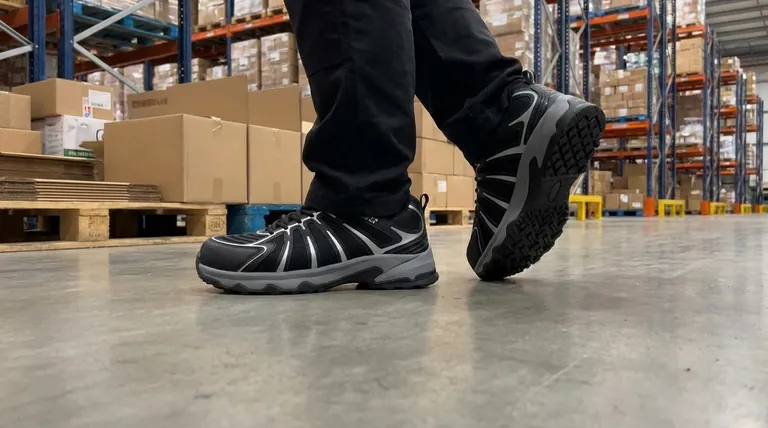
The Core Challenge: Protection vs. Physiology
Safety footwear is engineered for a single primary purpose: to protect your feet from workplace hazards. This design priority inherently creates a conflict with the natural mechanics of your foot.
How Safety Shoes Limit Natural Movement
The robust materials required for protection, such as steel toe caps and puncture-resistant soles, make the shoe rigid. This rigidity restricts the foot's natural flexibility and range of motion during walking.
The Consequence of Prolonged Wear
When your foot cannot move and flex naturally, the strain is transferred to other areas. Over a full day, this can lead to fatigue, joint stiffness in the ankles and knees, and persistent discomfort.
Not All Safety Shoes Are Created Equal
The common belief that all safety shoes are heavy and uncomfortable is outdated. The materials used in the protective components have a massive impact on the wearer's experience.
The Weight Factor: Steel vs. Composite
Traditional steel toe caps are effective but add significant weight to the shoe. Lifting this extra weight with every step is a primary cause of fatigue over an 8- or 12-hour shift.
Why Composite Toes Are Better for All-Day Wear
Composite toe shoes provide certified impact protection using non-metal materials like Kevlar, carbon fiber, or plastic. They are significantly lighter than steel, making them a superior choice for anyone on their feet all day.
Beyond the Toe Cap: Fit and Support
The most advanced protective features are useless if the shoe doesn't fit correctly. Proper arch support, adequate cushioning, and a secure fit are just as crucial for preventing fatigue and discomfort during extended wear.
Understanding Workplace Requirements
While comfort is a valid concern, the decision to wear safety shoes is rarely a personal choice. It's dictated by a formal assessment of risk in your work environment.
The Non-Negotiable Need for Protection
Employers mandate safety footwear based on a workplace hazard assessment. If this assessment identifies a risk of foot injury from falling objects, punctures, or other dangers, protective footwear becomes a condition of the job.
Employer Mandates
Based on the hazard assessment, an employer can legally require that safety shoes be worn at all times while on the job site. This is a standard and enforceable safety policy.
Making the Right Choice for Your Workday
Selecting the right safety shoe is a crucial investment in your daily comfort and long-term health. Your specific needs should guide your decision.
- If your primary focus is all-day comfort: Choose a safety shoe with a composite toe to reduce weight and minimize fatigue.
- If your primary focus is meeting job requirements: Confirm the specific safety standard (e.g., ASTM F2413) your employer requires and find a certified shoe that also fits you properly.
- If your primary focus is minimizing long-term strain: Prioritize a shoe that combines a lightweight composite toe with excellent arch support and cushioning, and consider using specialized insoles.
Ultimately, balancing mandatory protection with thoughtful footwear selection is the key to staying safe and comfortable on the job.
Summary Table:
| Key Consideration | Why It Matters for All-Day Wear |
|---|---|
| Toe Cap Material | Steel toes are heavy; composite toes (Kevlar, carbon fiber) are lighter, reducing fatigue. |
| Proper Fit & Support | Correct arch support and cushioning prevent joint strain and discomfort. |
| Workplace Mandate | Safety shoes are often required based on a formal workplace hazard assessment. |
| Primary Goal | Prioritize composite toes for comfort, or specific ASTM standards for job compliance. |
Stay Safe and Comfortable All Day Long
As a large-scale manufacturer, 3515 produces a comprehensive range of certified safety footwear for distributors, brand owners, and bulk clients. Whether your priority is the lightweight comfort of composite toes or meeting specific job site standards, our production capabilities ensure you get durable, comfortable, and compliant footwear.
Let us help you equip your team with the right protection. Contact our experts today to discuss your requirements and get a quote.
Visual Guide
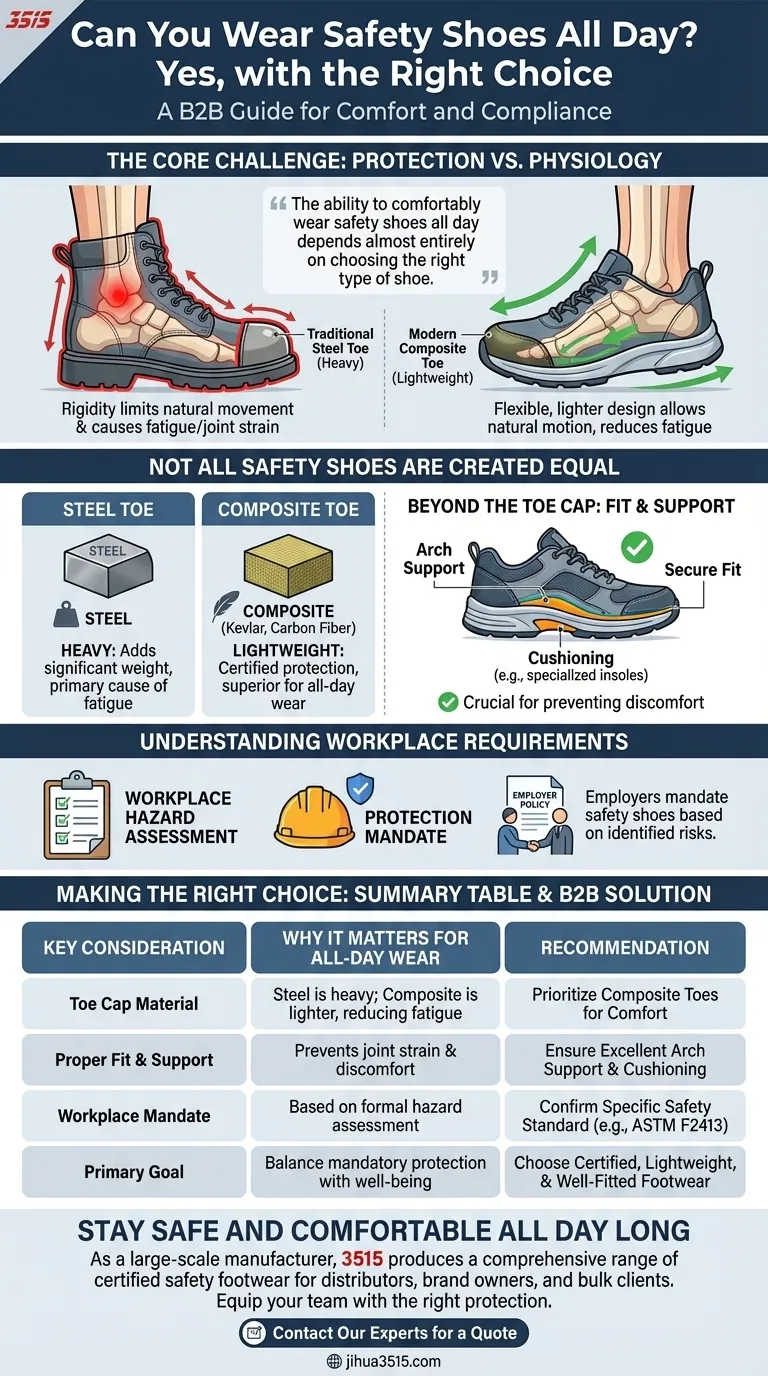
Related Products
- Premium KPU Athletic Safety Shoes for Wholesale
- Custom Safety Shoe Manufacturer for Wholesale & OEM Brands
- Premium Lightweight Safety Shoes for Wholesale & Bulk Orders
- Wholesale Durable Breathable Safety Boots Custom OEM Manufacturer
- Durable Rubber-Soled Utility Shoes for Wholesale & Custom Brand Manufacturing
People Also Ask
- Why is slip resistance important in safety footwear? Prevent Costly Workplace Slips and Falls
- What are the EN ISO 20345 norms for safety shoes? A Guide to Choosing the Right Protection
- What does a green triangle symbol on safety footwear mean? Your Guide to Maximum Puncture & Impact Protection
- How is puncture resistance evaluated in footwear soles? Balance Protection, Comfort & Safety
- Why is expert help recommended when selecting safety shoes? Ensure Perfect Fit & Hazard Protection
